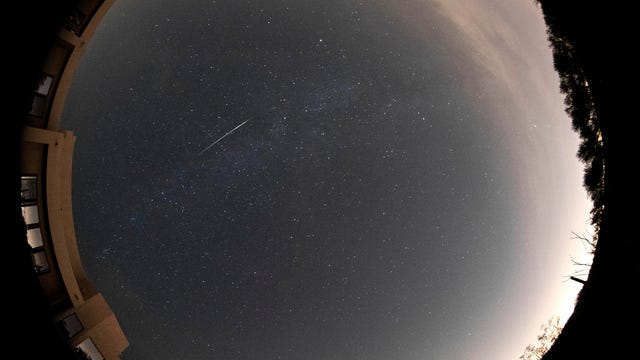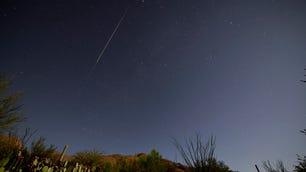Technologies
Meteor Shower Season Heats Up With Daytime Sextantid Show
Earth is set to pass through a series of dusty clouds of space debris from Halley’s Comet and others that promise to light up night skies.
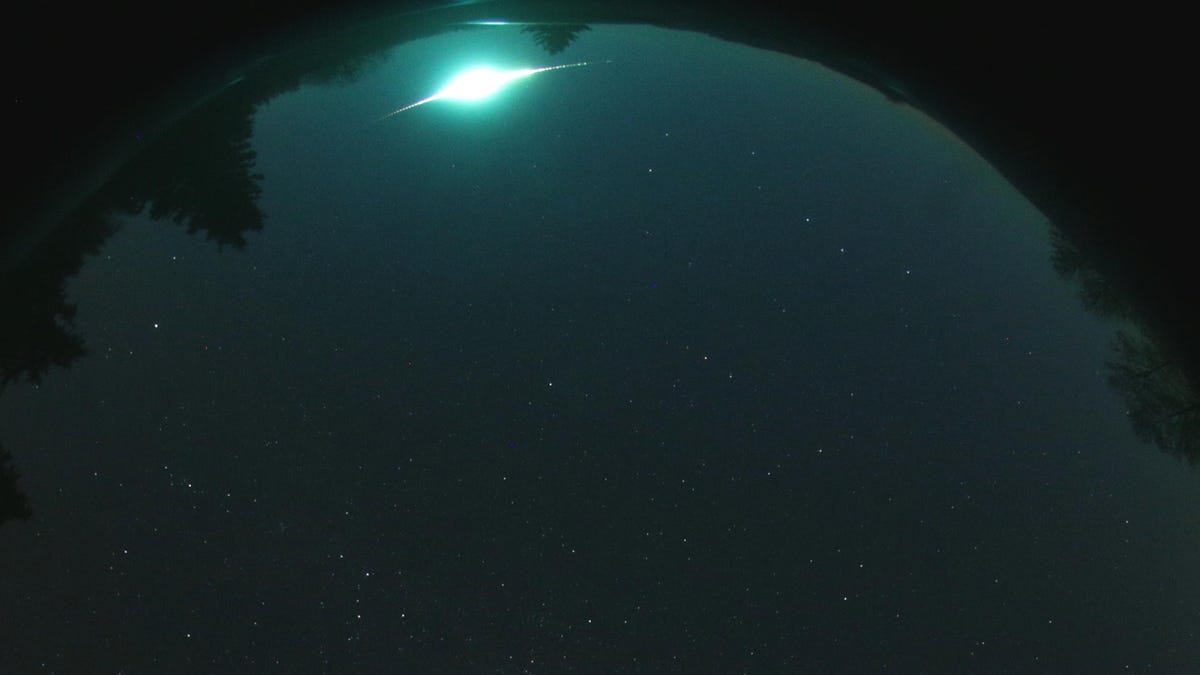
August’s Perseid meteor shower may be the most well known of the year, but it’s the last quarter of the year that brings the most shooting-star and fireball action to night skies.
As of this week, both the Orionid and Southern Taurid meteor showers are active and the little known Daytime Sextantid shower is peaking now.
The Sextantids are often ignored for obvious reasons because they’re oriented in such a way that they’re typically impacting our atmosphere during the day and therefore washed out by sunlight. However lucky observers may be able to catch one in the hour before dawn, when they can sometimes be seen shooting straight upward from the eastern horizon. This unusual shower peaks Wednesday, making Thursday morning the ideal time to go looking for the rare upward-shooting meteor.
Fortunately, the pre-dawn hours are also a good time to look for the other meteor showers active now.
While the Orionids aren’t set to peak until around Oct. 20, they still add some shooting stars to each night’s sky until then. The Taurids, on the other hand, don’t have a very defined peak and are forecast to be visible at a rate of around two per hour over the next several weeks.
Adding to the celestial drama is the Taurids’ reputation for delivering a number of bright fireballs streaking through the sky.
«In 2022, the Earth passed through a swarm of Taurid fireballs,» writes Bob Lunsford for the American Meteor Society. «This year we are further from this swarm but will still encounter some fireball activity.»
The Taurids can be traced to debris from the comet 2P/Encke, while the Orionids are connected to the leavings of the famed Halley’s Comet, which visits the inner solar system only about every 75 years. The celebrity snowball won’t be back until 2061.
Two distinct clouds from Halley’s Comet are responsible for both the Orionids each October and the Eta Aquariids meteor shower in May.
How to see the celestial show
When the Orionids peak between Oct 20 and 22, the conditions should be nearly perfect, especially with the moonless sky on the morning of the 22nd in the hours just before dawn. Most nights, the area near the constellation of Orion the Hunter where the Orionids appear to radiate from will be highest in the sky around 2 a.m. But it may be possible to see the meteors anytime between midnight and dawn. The closer you get to dawn, the better your chance of seeing one of those vertical Sextantids as well.
The Orionids are known for zipping through the sky at relatively high speed and often leaving long trains that can linger for a second or two.
During those peak mornings, the number of Orionid meteors will suddenly increase to between 10 and 20 per hour, but sometimes Earth passes through a particularly dense pocket of debris and those rates shoot up to 50 to 70, rivaling the Perseids.
While it’s worth marking the Orionids’ peak on your calendar, you might be able to catch a handful of meteors and a fireball on any given night over the next several weeks.
If you have at least an hour free on a night with clear skies and a location away from light pollution, all you need to do is find an area with a broad view of the night sky. Allow at least 15 minutes for your eyes to adjust to the darkness and then just relax, lie back and watch.
You’ll hear seasoned skywatchers talking about orienting yourself to face the radiant of a particular meteor shower. The radiant is the section of the sky from which certain meteors will appear to radiate outward. Meteor showers are usually named for a constellation within that radiant, so the Orionids are named for Orion.
If you can locate Orion in the sky and orient yourself in that direction, it might boost your viewing experience slightly. But the reality is that most amateurs won’t notice a difference. It’s far more important to have dark skies away from light pollution and the widest view of the sky possible. While meteors might originate from a certain radiant, they go all over the sky from that point, so it really doesn’t matter much which way you face.
Plus, there are more than Orionids up there on most nights. There are also the aforementioned Taurids, smaller showers like the Anthelion and even sporadic meteors that aren’t part of defined showers.
So just plan for at least an hour outside, preferably between midnight and dawn, for the best chance to make it through lulls in activity and spotting a few meteors. Be sure to bring all you need to be comfortable that long: Blankets, snacks and drinks are a good idea. Good luck!
Technologies
Chrome Autofill Now Supports Passport, Driver’s License and Vehicle Info
Soon, you’ll never need to remember anything ever again.
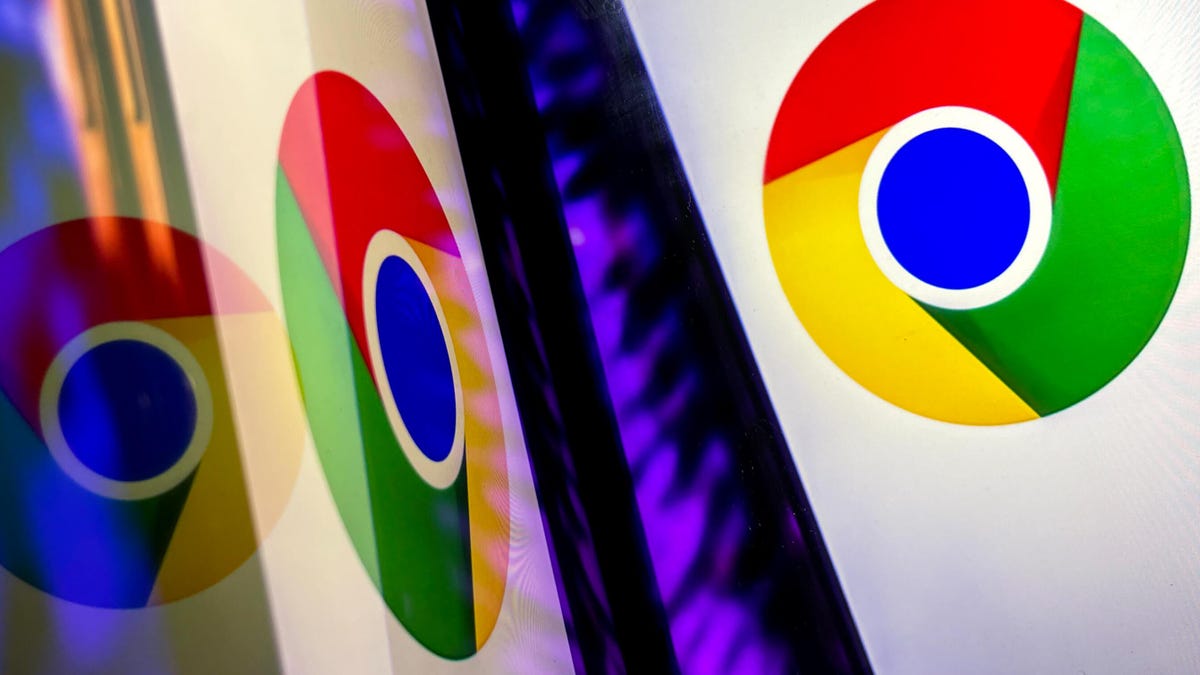
Computer users are accustomed to web browsers autofilling everything from names and addresses to credit card numbers. Now, Google Chrome is adding new enhanced autofill options that allow users to automatically populate fields for passports, driver’s licenses, and their vehicle’s license plate or VIN, Google said in a blog post on Monday.
Desktop users must choose to turn on the feature, which is called enhanced autofill. Otherwise, it stays off. To turn it on, open Chrome, and at the top right of your browser, select more, then settings, then autofill and passwords. Finally, choose enhanced autofill and turn it in.
Google says Chrome now can «better understand complex forms and varied formatting requirements, improving accuracy across the web.» The company also says that enhanced autofill will be «private and secure.»
This enhanced autofill update is available in all languages, and more data options will be supported in the coming months.
A representative for Google said the company had no additional comment.
Don’t miss any of our unbiased tech content and lab-based reviews. Add CNET as a preferred Google source.
Chrome is a critical component in Google’s business. The web browser, currently the most popular in the world with a 73% market share, according to GlobalStats, provides the company with valuable user data that it uses to sell advertising. Advertising is how Google makes the majority of its revenues. New features help keep users loyal to Chrome, making it more difficult for them to switch to other browsers, including those from companies like Perplexity and OpenAI.
Technologies
Today’s NYT Connections: Sports Edition Hints and Answers for Nov. 4, #407
Here are hints and the answers for the NYT Connections: Sports Edition puzzle for Nov. 4, No. 407.
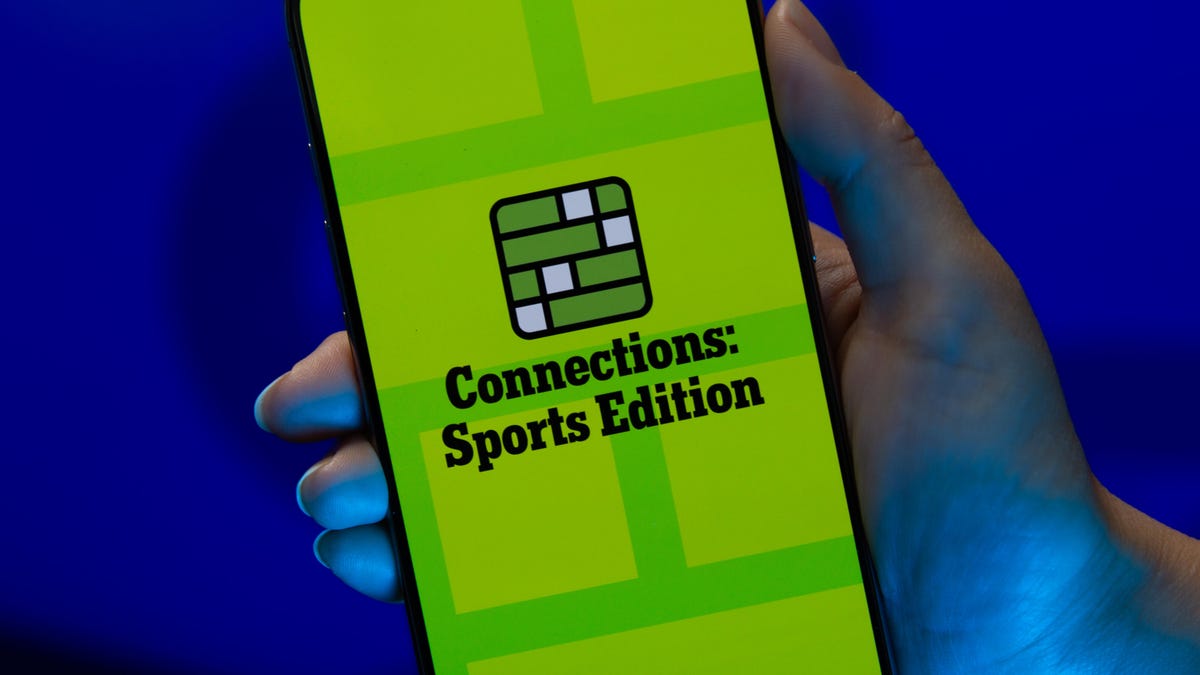
Looking for the most recent regular Connections answers? Click here for today’s Connections hints, as well as our daily answers and hints for The New York Times Mini Crossword, Wordle and Strands puzzles.
Today’s Connections: Sports Edition is a tough one. The Connections: Sports Edition puzzle makers will never run out of categories because they have discovered they can just pick one athlete and make a connections group out of four facts about that person. They do that today with the blue category, so if you don’t know that one player, you’re out of luck. If you’re struggling but still want to solve it, read on for hints and the answers.
Connections: Sports Edition is published by The Athletic, the subscription-based sports journalism site owned by the Times. It doesn’t show up in the NYT Games app but appears in The Athletic’s own app. Or you can play it for free online.
Read more: NYT Connections: Sports Edition Puzzle Comes Out of Beta
Hints for today’s Connections: Sports Edition groups
Here are four hints for the groupings in today’s Connections: Sports Edition puzzle, ranked from the easiest yellow group to the tough (and sometimes bizarre) purple group.
Yellow group hint: Get up and go!
Green group hint: College hoops.
Blue group hint: Famous basketball player.
Purple group hint: Not fair, but…
Answers for today’s Connections: Sports Edition groups
Yellow group: Energy.
Green group: Men’s college basketball teams with the most championships.
Blue group: Associated with Damian Lillard.
Purple group: Foul ____.
Read more: Wordle Cheat Sheet: Here Are the Most Popular Letters Used in English Words
What are today’s Connections: Sports Edition answers?
The yellow words in today’s Connections
The theme is energy. The four answers are pep, verve, vigor and zip.
The green words in today’s Connections
The theme is men’s college basketball teams with the most championships. The four answers are Kentucky, UCLA, UCONN and UNC.
The blue words in today’s Connections
The theme is associated with Damian Lillard. The four answers are 0, Dame Time, Trail Blazers and Weber State.
The purple words in today’s Connections
The theme is foul ____. The four answers are out, shot, territory and tip.
Technologies
Today’s NYT Mini Crossword Answers for Tuesday, Nov. 4
Here are the answers for The New York Times Mini Crossword for Nov. 4.
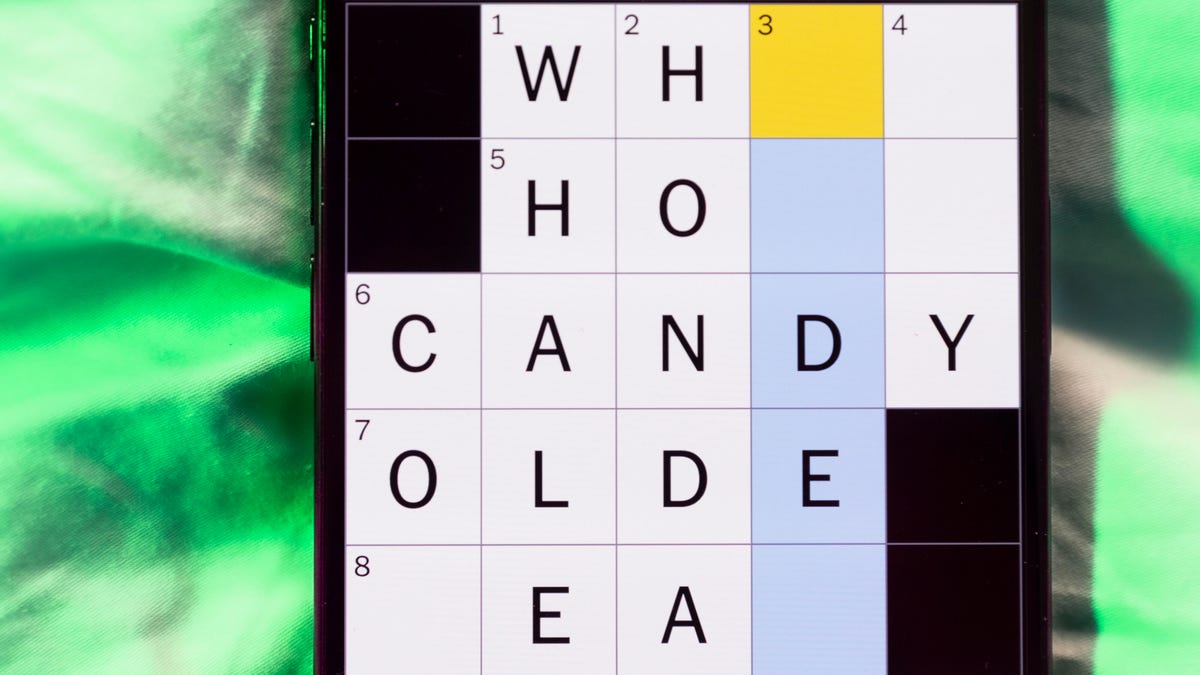
Looking for the most recent Mini Crossword answer? Click here for today’s Mini Crossword hints, as well as our daily answers and hints for The New York Times Wordle, Strands, Connections and Connections: Sports Edition puzzles.
Need some help with today’s Mini Crossword? There are a few tricky clues, so read on for the answers. And if you could use some hints and guidance for daily solving, check out our Mini Crossword tips.
If you’re looking for today’s Wordle, Connections, Connections: Sports Edition and Strands answers, you can visit CNET’s NYT puzzle hints page.
Read more: Tips and Tricks for Solving The New York Times Mini Crossword
Let’s get to those Mini Crossword clues and answers.
Mini across clues and answers
1A clue: Quickly fall asleep after a long day
Answer: CRASH
6A clue: 1/16 of a pound
Answer: OUNCE
7A clue: Where chess, shampoo and the number zero were invented
Answer: INDIA
8A clue: Uproar
Answer: FUROR
9A clue: Opposite of saved
Answer: SPENT
Mini down clues and answers
1D clue: Fancy hairdos
Answer: COIFS
2D clue: Period preceding a big event
Answer: RUNUP
3D clue: Tennis great Agassi
Answer: ANDRE
4D clue: Descendant of a wealthy family
Answer: SCION
5D clue: Symbol for «like» on Instagram
Answer: HEART
-

 Technologies3 года ago
Technologies3 года agoTech Companies Need to Be Held Accountable for Security, Experts Say
-

 Technologies3 года ago
Technologies3 года agoBest Handheld Game Console in 2023
-

 Technologies3 года ago
Technologies3 года agoTighten Up Your VR Game With the Best Head Straps for Quest 2
-

 Technologies4 года ago
Technologies4 года agoVerum, Wickr and Threema: next generation secured messengers
-

 Technologies4 года ago
Technologies4 года agoBlack Friday 2021: The best deals on TVs, headphones, kitchenware, and more
-

 Technologies4 года ago
Technologies4 года agoGoogle to require vaccinations as Silicon Valley rethinks return-to-office policies
-

 Technologies4 года ago
Technologies4 года agoOlivia Harlan Dekker for Verum Messenger
-

 Technologies4 года ago
Technologies4 года agoiPhone 13 event: How to watch Apple’s big announcement tomorrow

